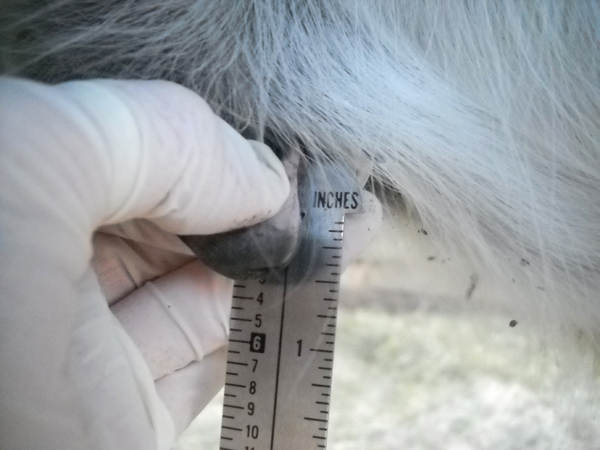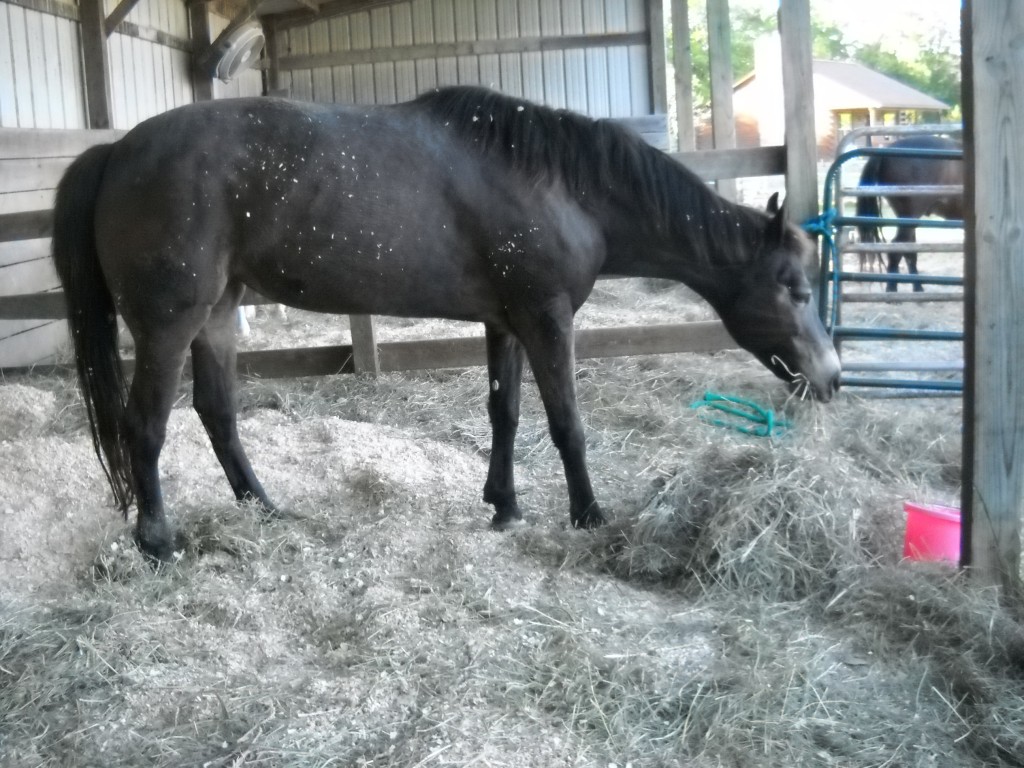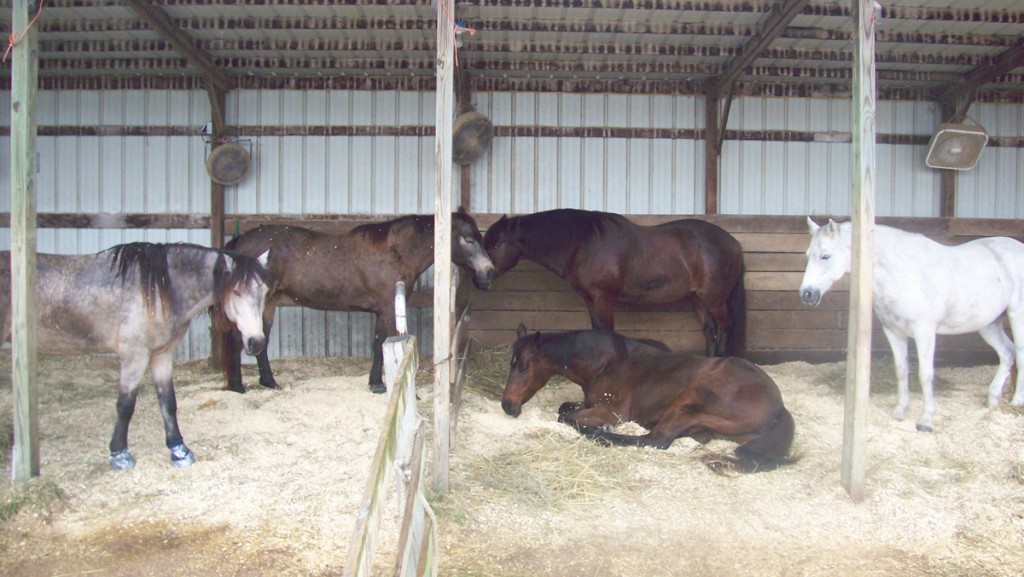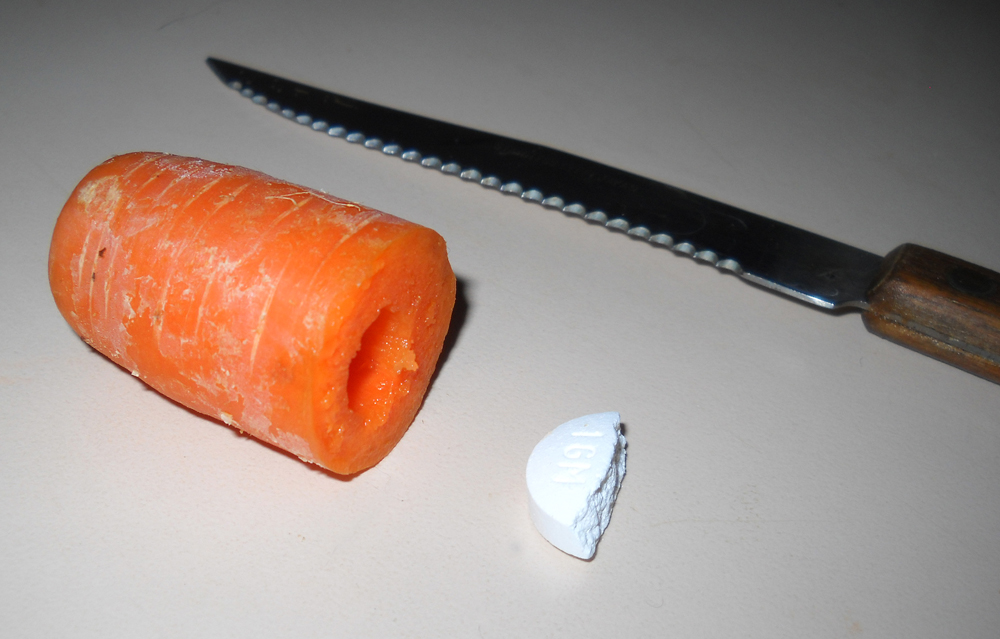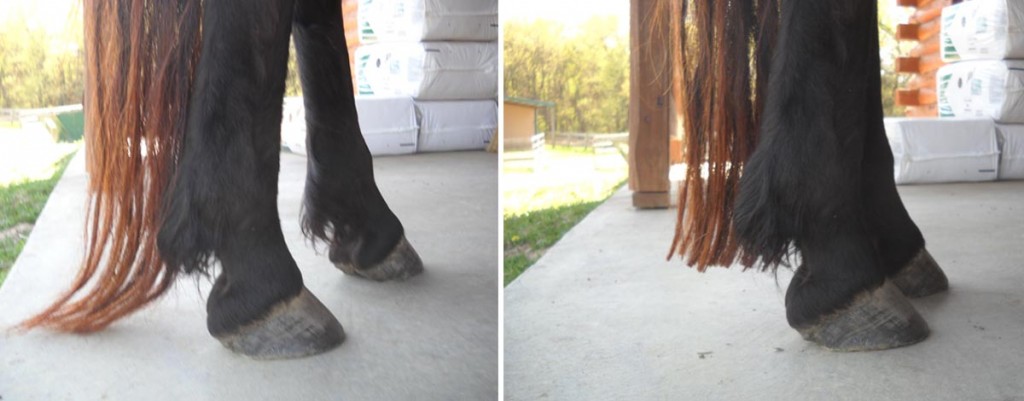How to clean a horse’s sheath at home
This article was reviewed and updated April 5, 2023.
—–
The sheath is one of those things that many horse owners pretend doesn’t exist. But I’ve found my gelding really appreciates good hygiene, and sheath cleaning needs to be less embarrassing and a higher priority.
I wanted to do a video on sheath cleaning, but my attempt to do so turned out to be a longish video of my elbow. If I posted it, viewers wouldn’t be able to tell what I was doing.
I will describe this process with words.
I have to clean the sheath of my laminitic horse every other week to prevent him from itching.
Thus, I had to learn how to do this myself rather than call the vet.
Since the sheath is a sensitive area, the water must be warm. I hook up a hose to my kitchen sink with an adapter and run the hose out the kitchen door since I don’t have hot water in my barn.
There is the smell factor. Sheath cleaning can leave your hands smelling unpleasant. Gloves can help with this, but I have never gotten through a cleaning without taking off the gloves because they were getting in the way. Don’t clean a sheath if you need to be someplace in an hour.
Preparation
Cleaning solution:
• Walmart’s Equate brand mouthwash, any variety
• Baking soda
Fill a small bucket a third full with water and add three big glugs of the mouthwash (maybe a fourth or fifth of the container). I don’t think you can use too much.
Tear off eight to 10 sections of paper towels, with two paper towels per section, and put them in the water.
Halter the horse and bring it to the wash area.
Take a segment of paper towels out of the bucket and start cleaning inside the sheath.
The sheath has two chambers. The lower chamber near the opening, where most of the dirt collects, and the upper sheath, which is harder to reach.
Lower chamber
Dirt and wax tend to accumulate in the area just inside the opening of the lower chamber. That debris will cover the first paper towels you use. In fact, if you haven’t cleaned the sheath in a long time, you may need more than 10 segments of paper towels for this cleaning.
As you work, you may need to peel or roll big pieces of debris off the walls of the sheath with your hand.
Once you have most of the debris removed, get a final wet paper towel segment and sprinkle a very generous pile of baking soda on it and use that to get the last bit of debris off the sheath wall, particularly just inside the opening.
Then use the hose to rinse everything off. I just thread the hose inside the lower chamber. I’ve never had a problem with the horse minding.
It’s tempting to do the baking soda pass a second time. I would recommend against it because you need to be careful not to make the sheath too dry. It will be a little swollen, if you do, and your horse will be walking funny in back for about a day.
Upper chamber
As you work the hose toward the far end of the lower chamber, you will be able to work maybe two fingers into the upper chamber, where the penis will be hiding. I use my fingers to remove the small amount of debris in there as the hose is squirting water in there. At first, my horse noticed this part of the cleaning, but now he doesn’t.
There are blog posts that talk about removing a bean at the end of the penis. I’ve never found anything there, but I won’t discount what others are recommending.
Clean-up
Wash the bucket and hose well with either mouthwash and baking soda or dishwashing detergent. I wash these items and the hose in between horses if I’m doing more than one horse.
I used to get two horses done in under 15 minutes. Now I just have the one gelding, and it takes only five minutes.
Sheath cleaning does not take long, and I think it’s a real service for geldings and stallions.
I’ve heard from mare owners that mares can have issues with itch, too. So, mare owners, feel free to apply these directions to your mare’s itchy problems, too.
The older I get, the more mistakes I regret. Not paying attention to my horses’ personal hygiene over the years was a big mistake. Comfort matters.
